My good friend and terrific underwater photographer Eric Cheng joined me this year in Tonga for a few days. I meant to post a bit about him much earlier, but I’ve been so busy with whales, boats, cameras, friends…it’s been impossible to find a free moment.

Among other things, Eric is great with gadgets. In fact, just about every gadget I like or want, Eric already has or knows about. And he shares my love for Canon photo gear, which tells me he’s got good taste!
Anyway, the day we arrived, I hadn’t slept for three nights and was completely exhausted. Eric, who had also been travelling for a couple of days at least, was on the other hand bounding with energy.
It was early afternoon by the time we settled in to our hotel. I was passed out on the bed when Eric called and asked, “Can I borrow your tripod?”
Next thing I knew, I was in his room watching him clean the CMOS sensor in his Canon 1Ds MkII. Even in my sleep-deprived state, I was quick to pick up on this opportunity to play with gadgets.
To cut to the chase, Eric came equipped with everything we needed to clean all our camera sensors. Between us we had two 1Ds MkII cameras, two 1D MkII bodies and a 5D.
I don’t remember all the sensor-cleaning stuff he had (which means I’ll have to email him to ask when I get back home), but let me just say this — if you own a digital SLR and have never cleaned your CCD or CMOS sensor, do it.
Little did I expect that I would learn such a valuable lesson while in Tonga in a semi-hallucigenic, sleep-deprived state, but this is probably one of the most eye-opening experiences concerning photography that I’ve had in a long time.
Take a look at the follow pictures of the sensor on my 1D MkII, and you’ll see why.
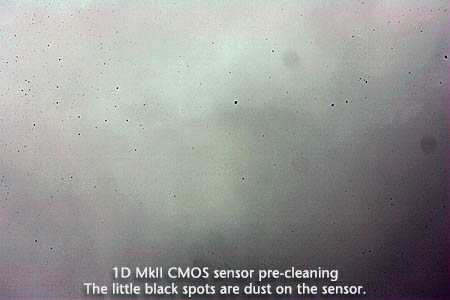
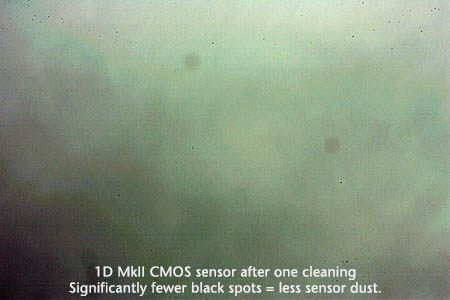
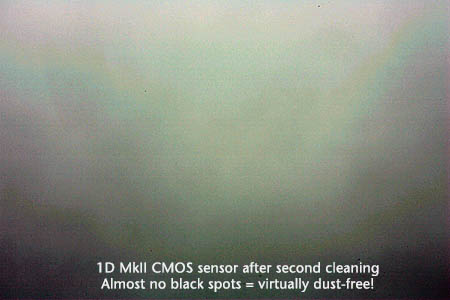
Ignore the strange colouration and the smudges in the photos. I shot a whitish cloud through a glass window at f22, then auto-levelled the jpgs to get these pictures of my camera’s sensor. Look at the little black spots. Each one of them represents dust on the sensor.
Why is this important?
Because each dust spot will show up on your image, meaning you’ll have to get rid of it later in Photoshop. So removing accumulated dust on the sensor means you’ll have less painstaking cleaning-up to do for your photos. Hurray!
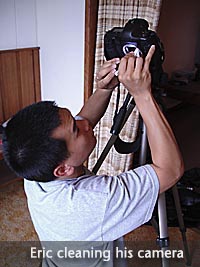
It’s probably a good idea to have clean sensors for all photography. Specifically for underwater photography though, having a dust-free sensor is a particular bonus for macro photography, where dust spots tend to get magnified and really stand out. If you’ve taken macro photos and had all sorts of strange dots, specks and miscellaneous ugly stuff show up in your images, it’s probably time to clean your sensor.
The process is a bit involved, and since I wasn’t completely awake while we were doing this, I don’t remember the names and brands of all the things Eric had with him. In essence, cleaning your sensor involves using specific tools and wiping surfaces that won’t hurt your camera’s sensor, and taking test shots (like the ones above) to see first how much dust has accumulated on your sensor, and then to monitor progress as you go along.
The goal, of course, is to remove as much accumulated dust as possible.
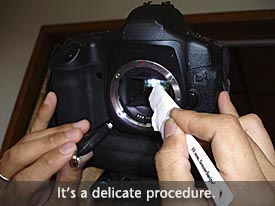
It seems to take several tries to get rid of most sensor dust. It took me two times the first time I tried it, but that was with lots of guidance from Eric, and after I had had a chance to watch him clean his cameras.
The lesson I learned from this sensory experience? I’ll need to make sure Eric and I travel together once every 6-12 months so I can keep my sensors clean!
[tags]Canon, CMOS, Underwater Photography, Photography[/tags]